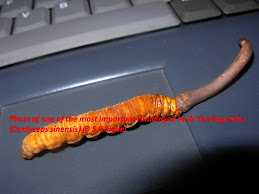The nearly complete skeleton of a 47 million-year-old creature found in Germany was displayed this week by scientists who said it would help illuminate the early evolution of monkeys, apes and humans.
About the size of a small cat, the lemur-like animal has opposable thumbs, four legs and a long tail.
It's not a direct ancestor of monkeys and humans, but researchers say it provides a good indication of what such an ancestor may have looked like.
SOUNDBITE (English) Jens Franzen, Senckenberg Research Institute, Frankfurt, Germany: "It is a member of the ancestors. We could call it, if we would put it familiarly, we are not dealing with our grand, grand, grand, grandmother, but perhaps with our grand, grand, grandaunt."
The discovery was made by amateur fossil hunters in a shale pit near Frankfurt, Germany more than 25 years ago. Its significance was not realized until the University of Oslo bought it for study about 2 years ago.
The animal was a juvenile female that scientists believe died at about nine or 10 months.
Because the skeleton is so remarkably complete, scientists believe it will provide a window into primate evolution.
SOUNDBITE (English) Jorn Hurum, University of Oslo: "We of course are not stating that this is our direct ancestor, that's too much, even it's debated when you go a few (m) million years back. Remember this is 47 (m) million years ago, it's really hard to pinpoint exactly who gave rise to humans at that point but this is as good as it gets really."
SOUNDBITE: (English) Holly Smith, University of Michigan Museum of Anthropology: "This skeleton is going to inform almost anything that we talk about in trying to determine the ancestor of higher primates."
The unveiling was made at the American Museum of Natural History in New York.
The story of the fossil find will be shown in the US on the channel History.
Source:http://news.nationalgeographic.com/news/2009/05/090520-missing-link-found-video-ap.html
About the size of a small cat, the lemur-like animal has opposable thumbs, four legs and a long tail.
It's not a direct ancestor of monkeys and humans, but researchers say it provides a good indication of what such an ancestor may have looked like.
SOUNDBITE (English) Jens Franzen, Senckenberg Research Institute, Frankfurt, Germany: "It is a member of the ancestors. We could call it, if we would put it familiarly, we are not dealing with our grand, grand, grand, grandmother, but perhaps with our grand, grand, grandaunt."
The discovery was made by amateur fossil hunters in a shale pit near Frankfurt, Germany more than 25 years ago. Its significance was not realized until the University of Oslo bought it for study about 2 years ago.
The animal was a juvenile female that scientists believe died at about nine or 10 months.
Because the skeleton is so remarkably complete, scientists believe it will provide a window into primate evolution.
SOUNDBITE (English) Jorn Hurum, University of Oslo: "We of course are not stating that this is our direct ancestor, that's too much, even it's debated when you go a few (m) million years back. Remember this is 47 (m) million years ago, it's really hard to pinpoint exactly who gave rise to humans at that point but this is as good as it gets really."
SOUNDBITE: (English) Holly Smith, University of Michigan Museum of Anthropology: "This skeleton is going to inform almost anything that we talk about in trying to determine the ancestor of higher primates."
The unveiling was made at the American Museum of Natural History in New York.
The story of the fossil find will be shown in the US on the channel History.
Source:http://news.nationalgeographic.com/news/2009/05/090520-missing-link-found-video-ap.html


